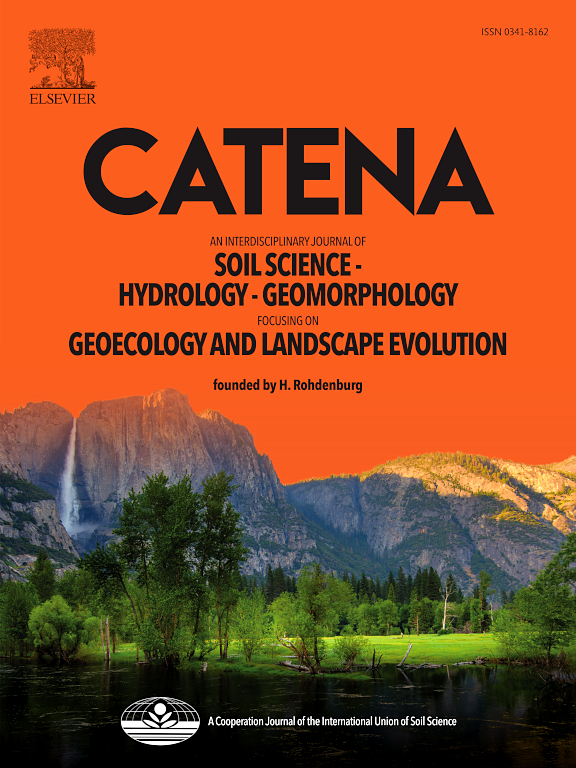Elevational patterns in the diversity and composition of soil archaeal and bacterial communities depend on climate, vegetation, and soil properties in an arid mountain ecosystem
IF 5.4
1区 农林科学
Q1 GEOSCIENCES, MULTIDISCIPLINARY
引用次数: 0
Abstract
The continuous changes in climate, vegetation, and soil properties along elevational gradients provide a space-for-time method for probing the mechanisms behind the generation and maintenance of biodiversity. However, elevational patterns of soil microbial communities along elevational gradients and their driving mechanisms in arid mountain are poorly understood. The metagenomics technique was employed to examine the α-diversity and community composition of soil archaea and bacteria along elevational gradients ranging from 1707 to 3548 m in Mt. Middle Kunlun, China. The number of bacterial sequences was significantly higher than that of archaeal sequences, and the dominant phyla and genera in both communities showed significant differences in abundance across elevations. The α-diversity (Shannon index) displayed a monotonically increasing pattern for bacteria and a hump-shaped pattern for archaea, while the community composition of both archaea and bacteria demonstrated a similar hump-shaped trend. The community composition of archaea and bacteria were influenced by elevation via precipitation, vegetation, and soil properties. However, the underlying factors for these two microbial communities were different. Environmental-physiological constraints (e.g., soil water content and pH) were determined to be the main drivers of archaeal community composition. Bacterial community composition was primarily influenced by vegetation factors (such as plant diversity and cover) and soil nutrients (such as available nitrogen). This research offers a thorough examination of the biogeography of soil microbes in precipitation-sensitive or arid mountain ecosystems.
气候、植被和土壤特性沿海拔梯度的连续变化为探究生物多样性的产生和维持机制提供了一种以时间换空间的方法。然而,人们对干旱山区土壤微生物群落沿海拔梯度变化的模式及其驱动机制知之甚少。本研究采用元基因组学技术研究了中国中昆仑山海拔1707米至3548米梯度土壤古细菌和细菌的α多样性和群落组成。细菌序列的数量明显高于古细菌序列,两种群落中的优势菌门和优势菌属在不同海拔高度的丰度差异显著。细菌的α-多样性(香农指数)呈单调递增模式,而古细菌的α-多样性呈驼峰形模式,古细菌和细菌的群落组成也呈类似的驼峰形趋势。古细菌和细菌的群落组成受到海拔高度、降水、植被和土壤特性的影响。然而,这两种微生物群落的基本因素是不同的。环境生理制约因素(如土壤含水量和 pH 值)被认为是古细菌群落组成的主要驱动因素。细菌群落组成主要受植被因素(如植物多样性和覆盖度)和土壤养分(如可用氮)的影响。这项研究对降水敏感或干旱山区生态系统中土壤微生物的生物地理学进行了深入研究。
本文章由计算机程序翻译,如有差异,请以英文原文为准。
求助全文
约1分钟内获得全文
求助全文
来源期刊

Catena
环境科学-地球科学综合
CiteScore
10.50
自引率
9.70%
发文量
816
审稿时长
54 days
期刊介绍:
Catena publishes papers describing original field and laboratory investigations and reviews on geoecology and landscape evolution with emphasis on interdisciplinary aspects of soil science, hydrology and geomorphology. It aims to disseminate new knowledge and foster better understanding of the physical environment, of evolutionary sequences that have resulted in past and current landscapes, and of the natural processes that are likely to determine the fate of our terrestrial environment.
Papers within any one of the above topics are welcome provided they are of sufficiently wide interest and relevance.
 求助内容:
求助内容: 应助结果提醒方式:
应助结果提醒方式:


